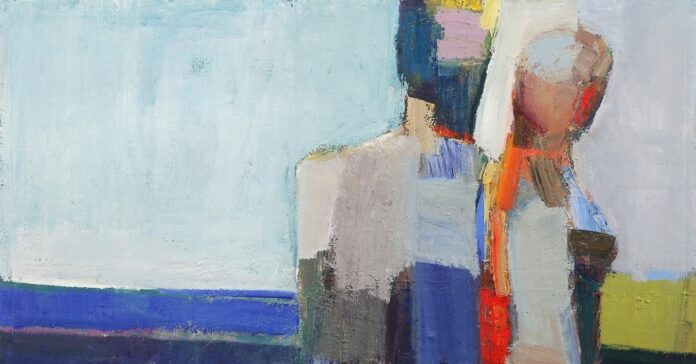Insights on light, color, and composition tapped by the artists of the 1950s and ’60s Bay Area Figurative Movement are evident in artist Sandy Ostrau’s figurative and landscape works. She is the first person to affirm that observation. It’s nearly an homage.
Ostrau says that many of her peers in the vibrant and varied Bay Area arts scene have followed in the footsteps of artists Richard Diebenkorn, David Park, and Elmer Bischoff—and that one senses a passion for art-making here that continues to grow.
“Figuration is still flourishing in the Bay Area, and I find myself in that group of artists who base their work on representation, but express their subjects in an abstract and expressive style,” Ostrau told 48hills.
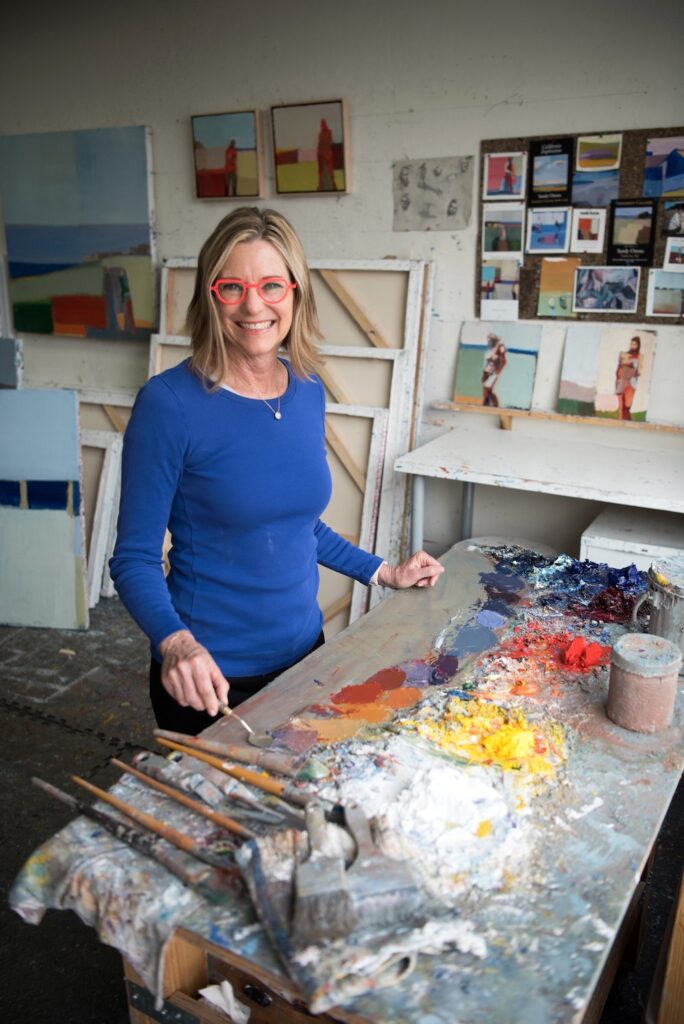
Ostrau says the influence of the older generations who came out of the San Francisco Art Institute, UC Berkeley, and UC Davis art programs is still very prevalent. As younger artists come up, she notes a resurgence of artwork influenced by social issues.
But she cites the challenges, as well, to the viability of our art community as a whole. As the Bay Area is one of the most expensive places to live in the country, she feels the difficulty that galleries face in staying afloat, and those posed to artists looking to work, study, and thrive.
“It’s good to have a robust art community to spawn young artists and allow mid-career artists to remain working in the area. I often hear that attracting younger buyers to the art market is challenging and galleries are working hard to educate potential buyers about the Bay Area’s legacy in the art world, to remedy that condition,” she said.
Ostrau grew up in Palo Alto, after her father accepted a position with Stanford Research Institute when she was five. Aside from attending UC Santa Barbara for college (BA, 1982), she has spent most of her life there.
Residing on the edge of the Downtown North neighborhood, Ostrau enjoys the diverse area densely populated by young Stanford grad students, working professionals, young families, and the elderly. Bordering the San Francisquito Creek watershed surrounded by Coast Live Oak trees, the area has both an urban and rural vibe. Ostrau often walks to campus to visit the Anderson Collection and Cantor Art Museum.
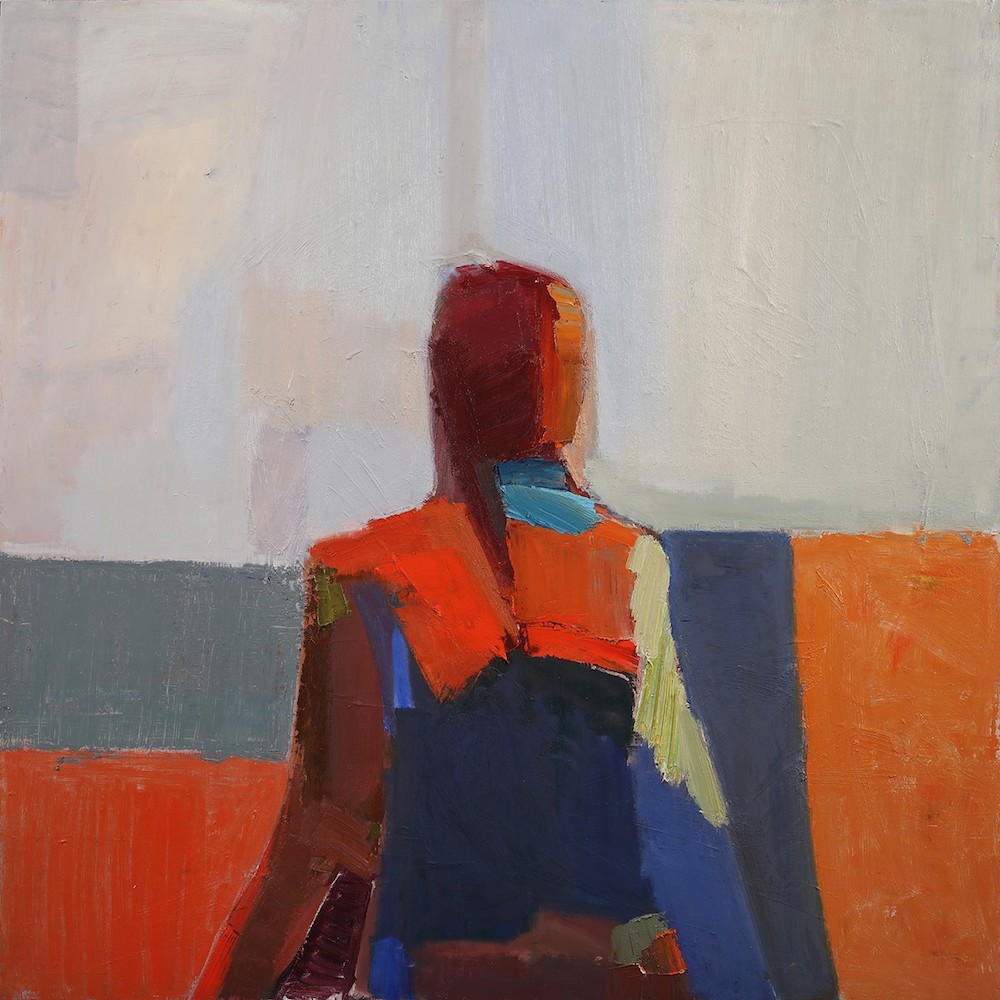
Nature is the primary motivation for Ostrau’s artworks, and she feels both encouraged by and grateful for access to places of natural beauty. She visits the Sierra Nevada mountains and the coast of California frequently and says—though it may sound cliché—the light and colors she sees in the varied landscapes of California inspire her each day.
“There is something unique in the light here in California that many artists have been drawn to, myself included. As someone who has spent many hours painting outdoors (en plein-air) all over the state, I have learned to see and to recreate the subtle colors and textures that I see in nature,” she said.
Additional artists who have energized her work include Nicholas De Stael, David Park, and Raimonds Staprans. She also cites Pre-Renaissance painter Masaccio and his depiction of humanity, especially in the fresco “Expulsion from the Garden of Eden.”
In painting figures immersed in landscape, Ostrau’s goal is to create a sense of unity between the natural world and humans. Very early in her painting career, she aimed to simplify landscape in order to connect to a very specific element or feeling that she found in the scene as she was working.
“I strive to eliminate unnecessary detail in both the figure and background, so the focus is on what the figure is doing rather than who it is. I want the viewer to feel their place in the picture,” Ostrau said.
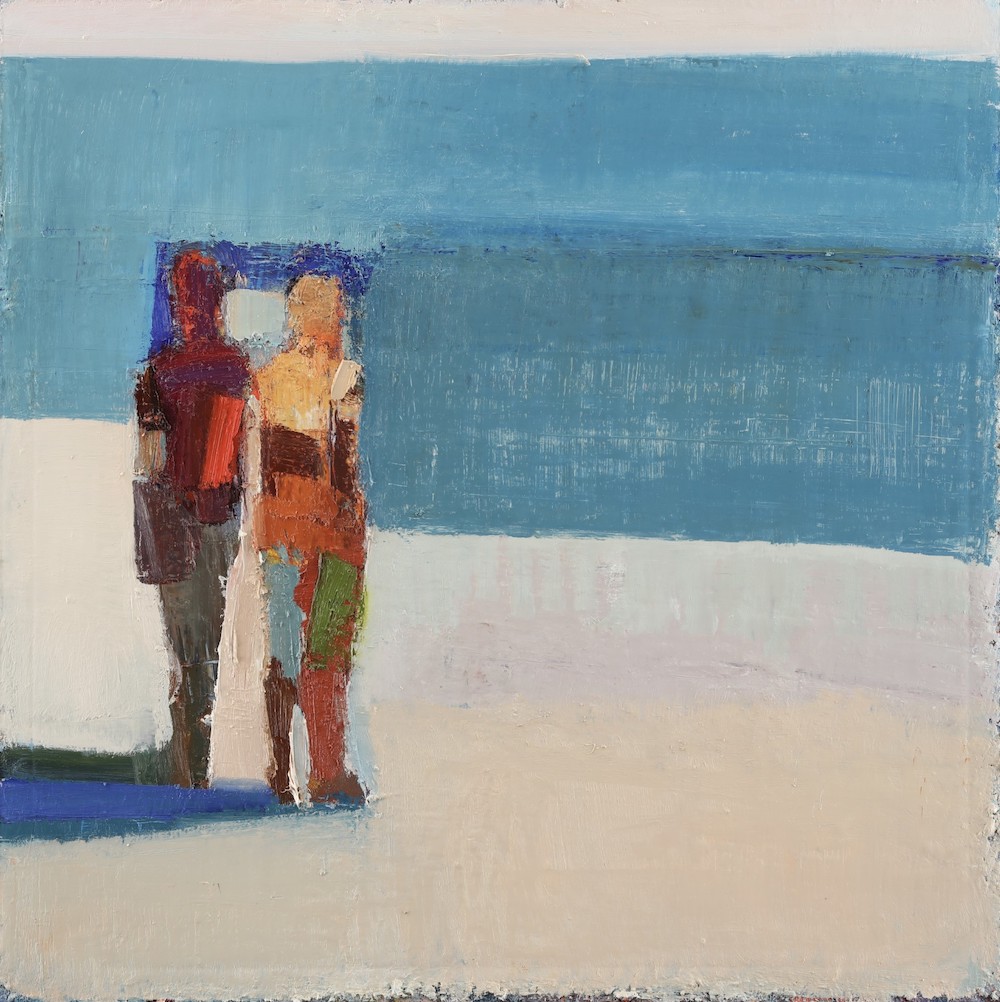
Bringing a sense of calm and contemplation into each of her works, Ostrau is also imparting the energy and physicality of a textural painting process, which she describes as a push-pull of dynamic energy in the application of paint in abutment with creating a serene, still composition.
Ostrau maintains two workspaces, one located in an older light industrial building in Mountain View and a second studio located on the North Coast in Sea Ranch, in an historic building that was once used by an early architect of the region. The space contains natural light from the southwest and two large easels, including one that, befittingly, was formerly owned by Diebenkorn. Ostrau works almost every day, starting early in the morning with a ritual of making tea, setting out new paint on rolling carts, and a half hour or so of mixing colors. Her physical palette is gorgeous, with gobs of paint larger than tennis balls.
“There is a warmup time which involves adding the first layers of paint to a panel or canvas. Once I feel ready, I can then work on paintings that are more fully resolved,” Ostrau said.
It’s a long process of adding, subtracting, and moving paint around, with usually six to 10 works simultaneously active in various stages of development. Ostrau never sets out with a finished scene in mind, unless she is working from a model or still-life, allowing each work to evolve over a period of many weeks. Flipping paintings upside down or sideways as she works, Ostrau coaxes out what interesting elements might be found.
“Rather than painting like a jigsaw puzzle where you are filling in color, I like to work more in a lost and found way. Finding something new to keep my interest,” she said.
She doesn’t enjoy the beginning stages but loves the middle and end, so after working on a new canvas, she rewards herself by completion of another piece. In that part, she says there is often a very strong instinctual reaction that says this is as good as it will get, this feels just right. And the work is finished.
Her curve towards making began as a child, engaged in creative projects. While studying art history in high school, she traveled to Europe on a classical civilizations tour, then took a couple of figure drawing classes in college, and a five-month backpacking trip around Europe post-graduation to explore museums. In her early 30s, she began making silkscreened and hand-painted clothing and housewares, which evolved into Sandy Ostrau Designs, with T-shirts for events including the launch of an Apple product, medical conferences, athletics, schools, and a line for Nordstrom. When she realized that she would need to take all production overseas in order to make a profit, she ended the business.
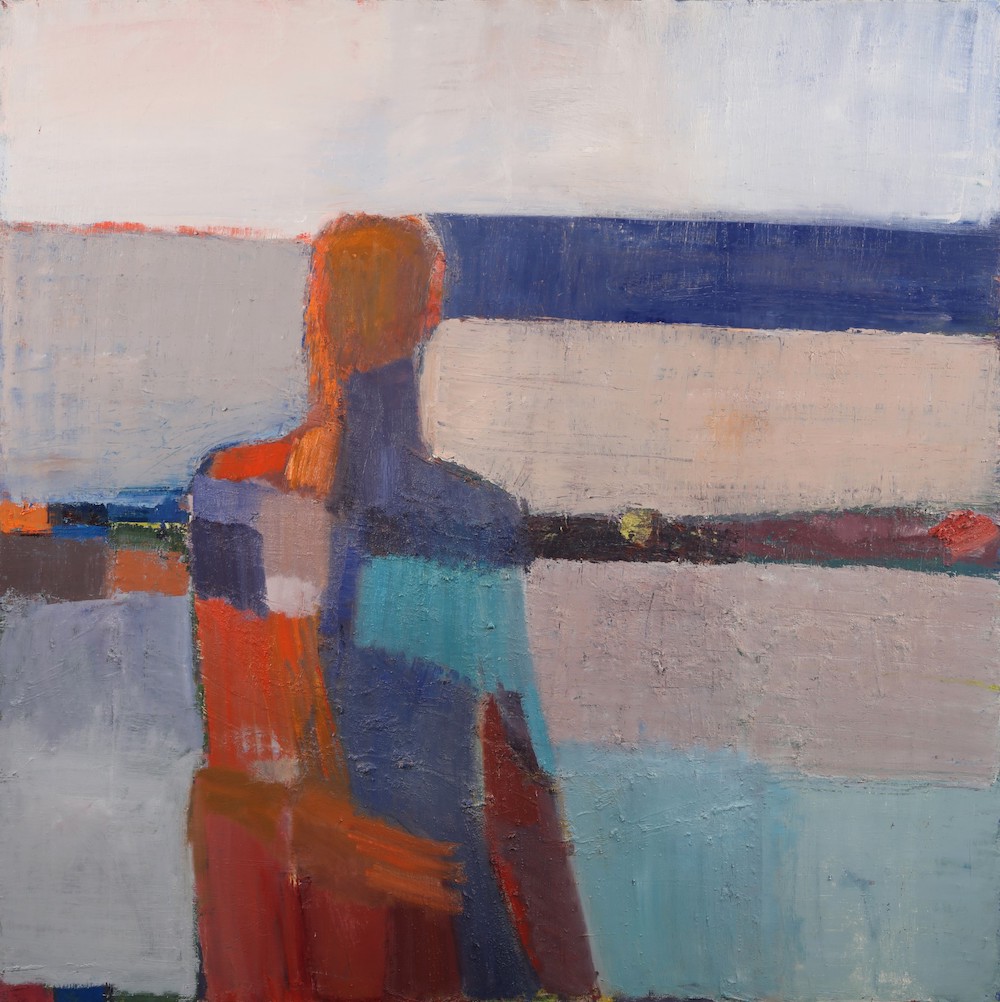
“I began taking painting classes at the Palo Alto Art Center, where I found Jim Smyth, an amazing teacher with whom I studied plein-air with, and instructor Brigitte Curt. For many years, I took classes several days a week,” she said.
Ostrau is now working on larger paintings and moving forward in her endless pursuit of creating connection between figure and landscape. Toggling between two styles: abstraction and representational, Ostrau says she is perpetually sitting on a fence between those two approaches to her work. With regard to that singular devotion of subject matter, Ostrau says that issues surrounding climate change and its impacts locally and globally has reinforced her reverence for the natural world and dread over how dire the situation could become in the future.
Her hope is that when someone brings one of her paintings into their home, that it will not only bring great joy to their environment, but that they will see the connection we all have with nature, love the colors—and maybe even find themselves in the work.
“Our interrelationship should not be taken for granted,” she said. “By depicting human beings integrated into nature in my paintings, I hope to drive home that message. We are all connected.”
Sandy Ostrau is represented by Dolby Chadwick Gallery in San Francisco and Sue Greenwood Fine Art in Laguna Beach. For more information, visit sandyostrau.com and on Instagram.


